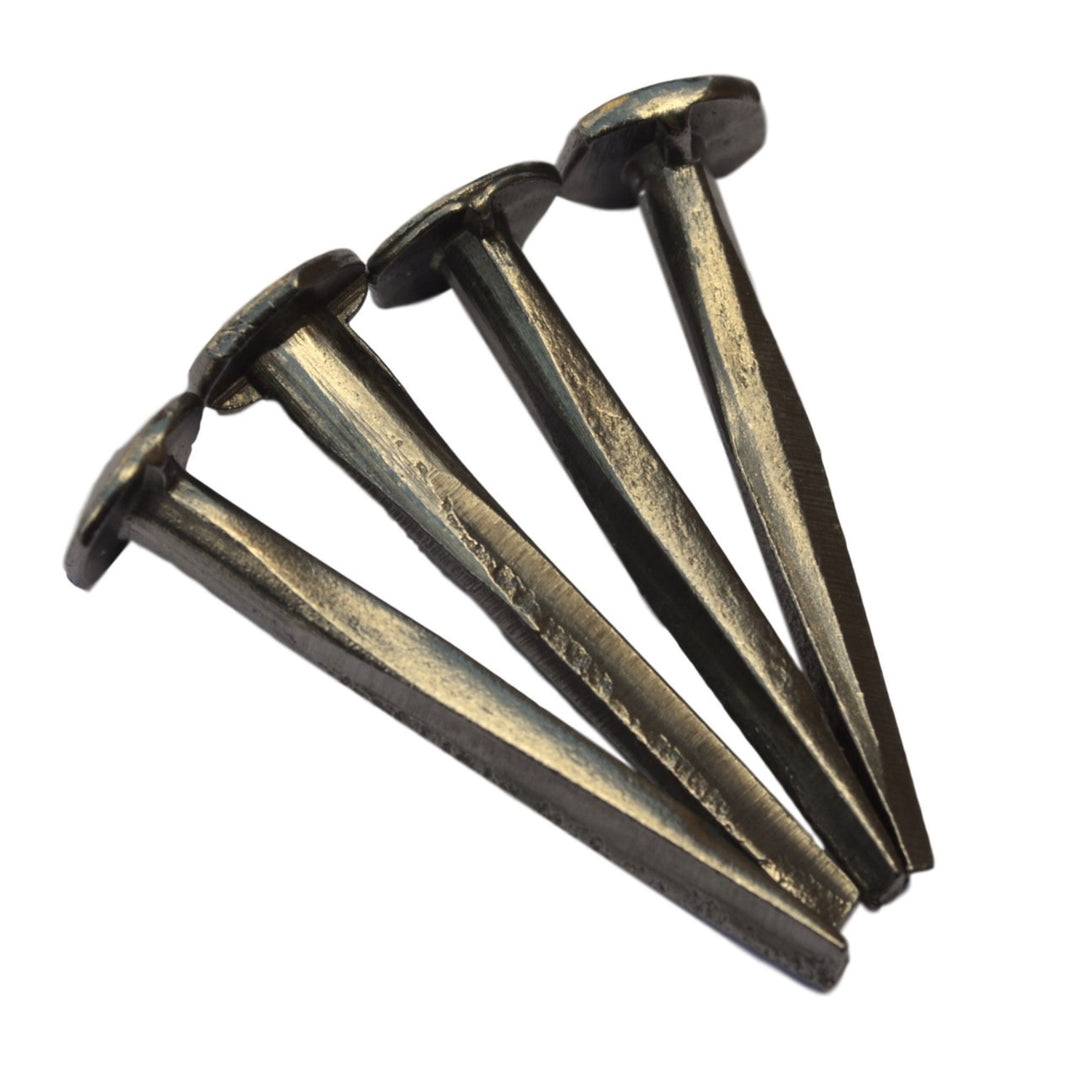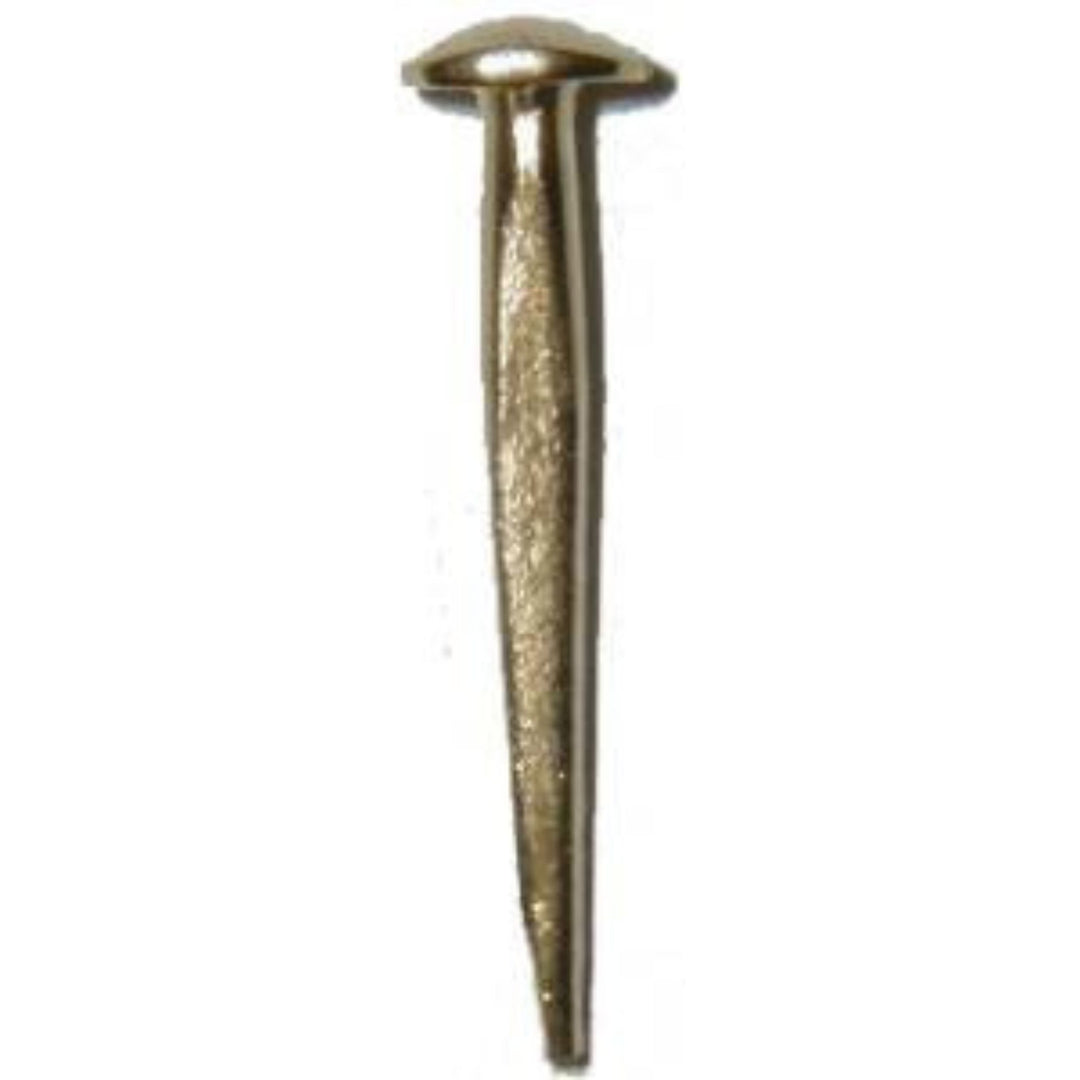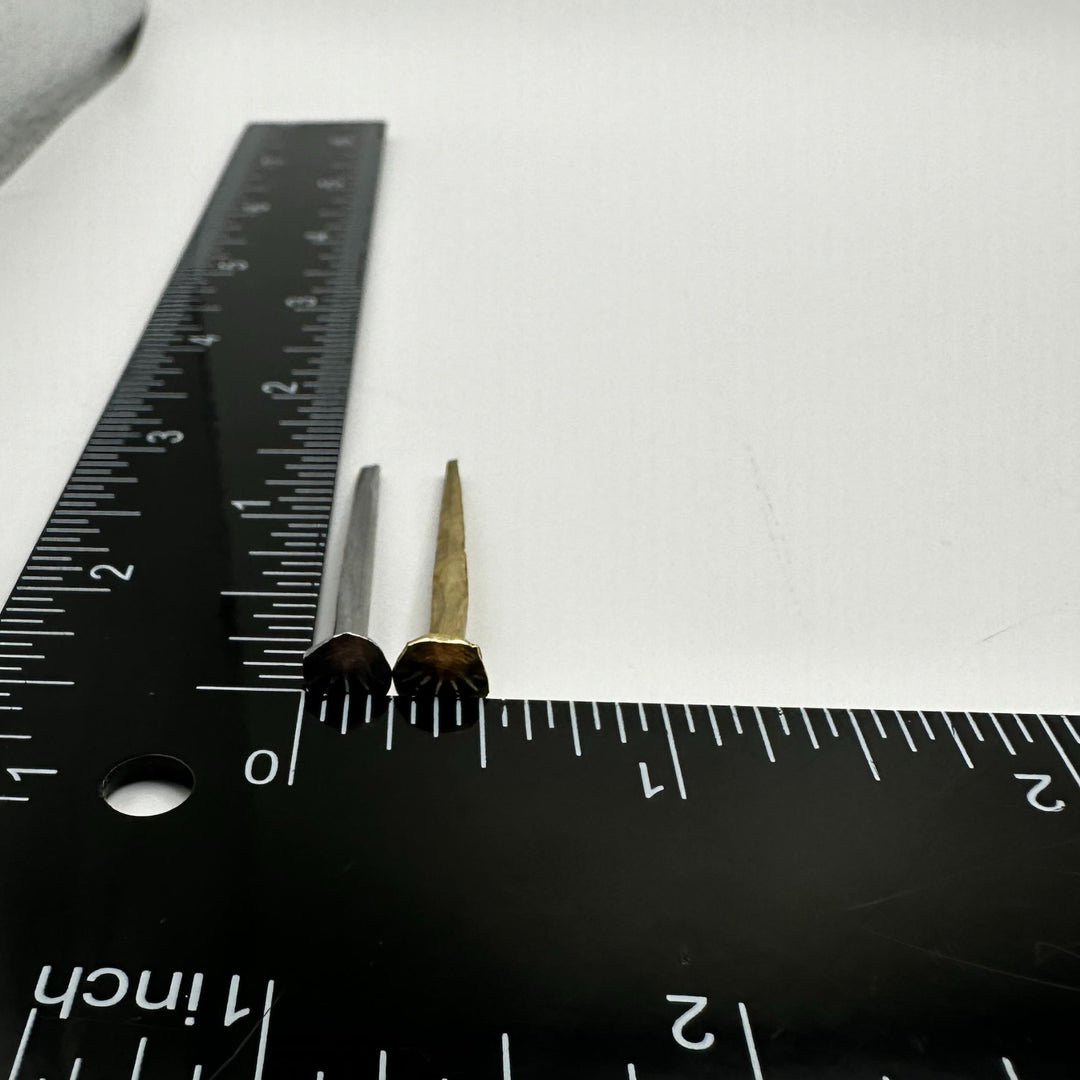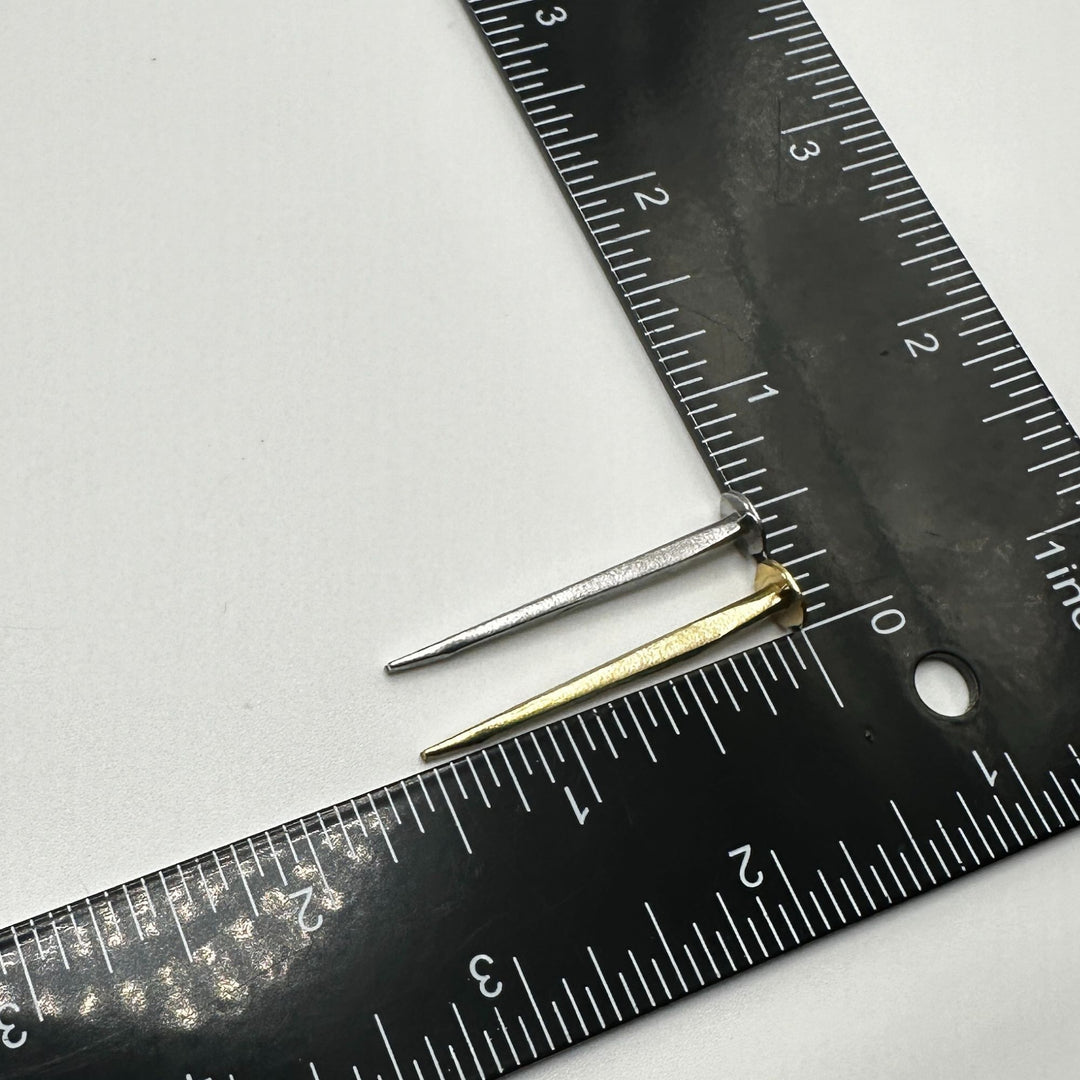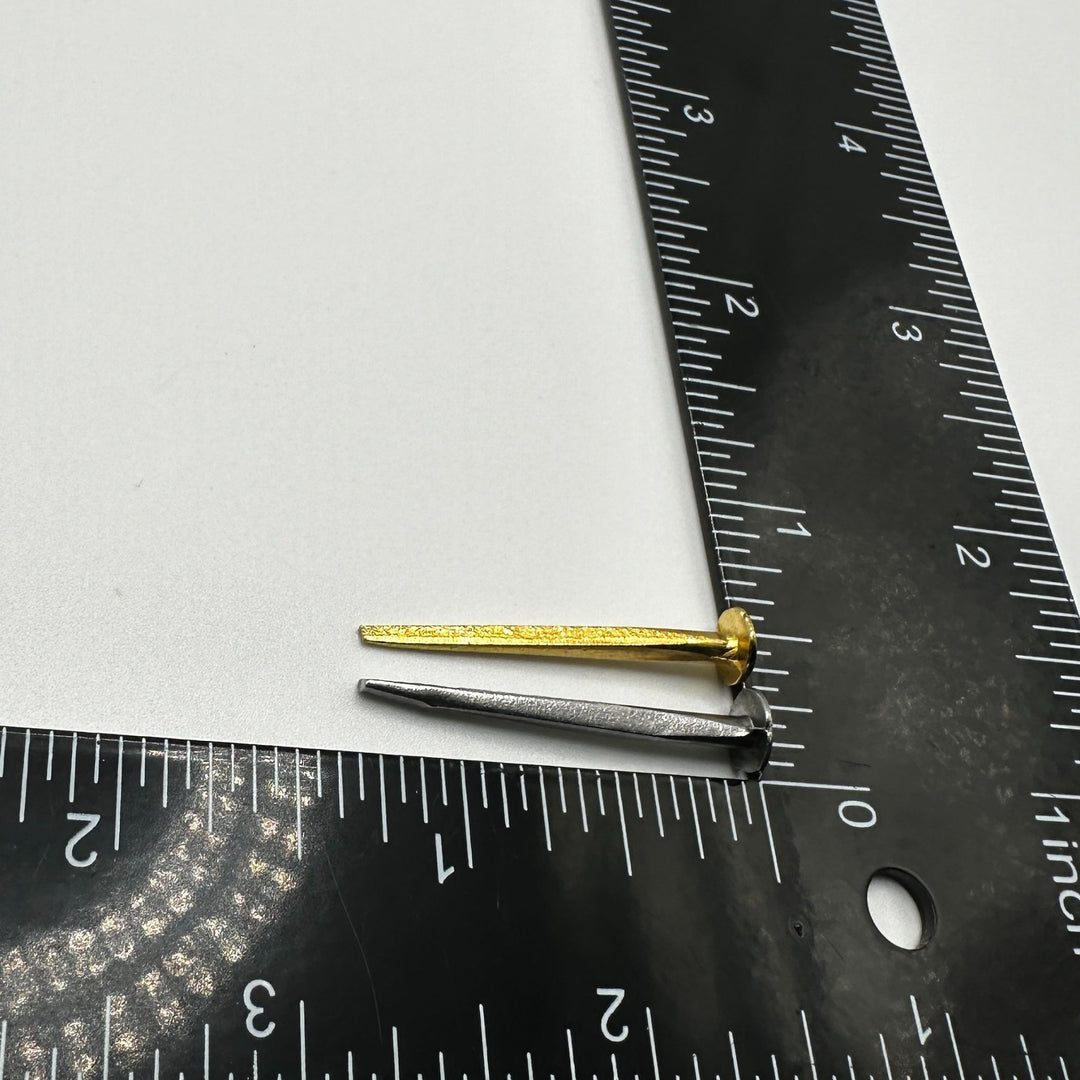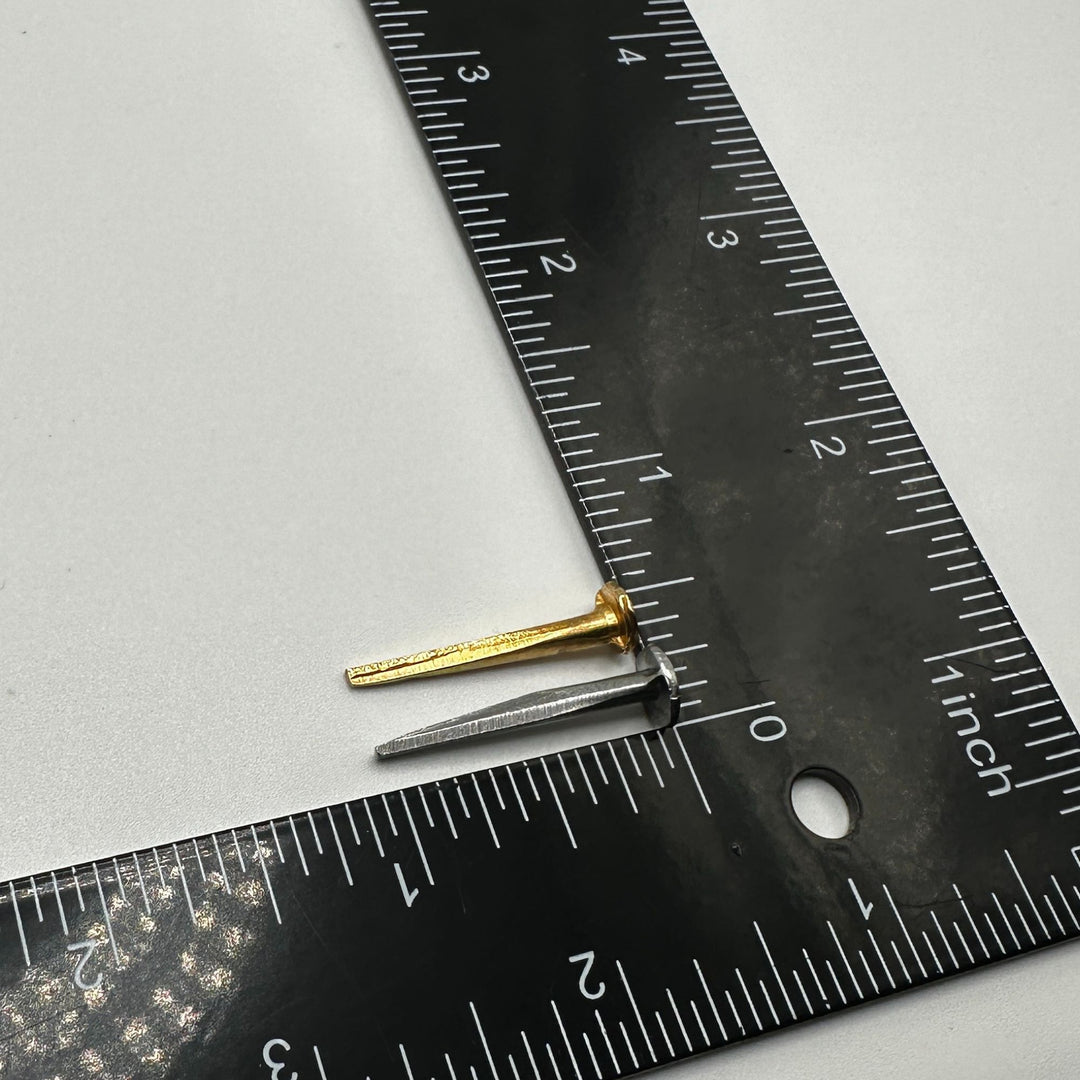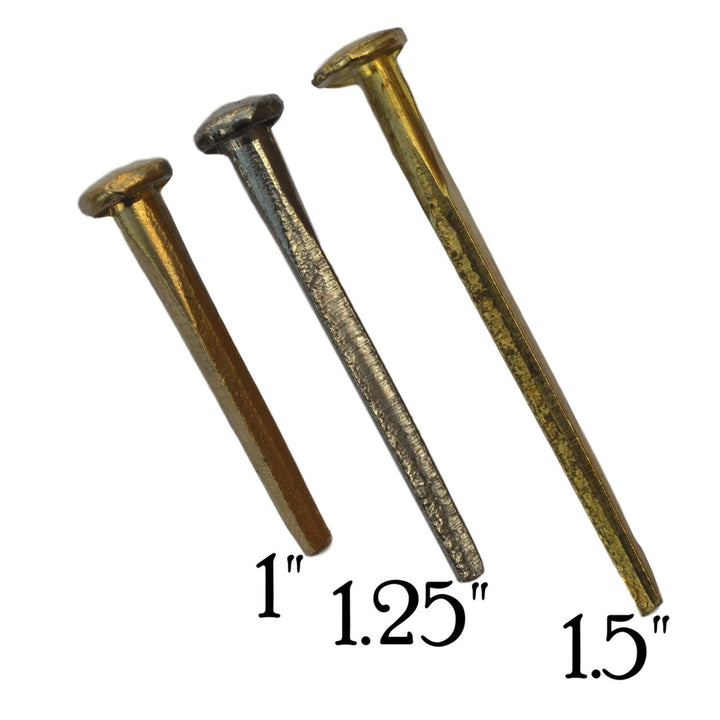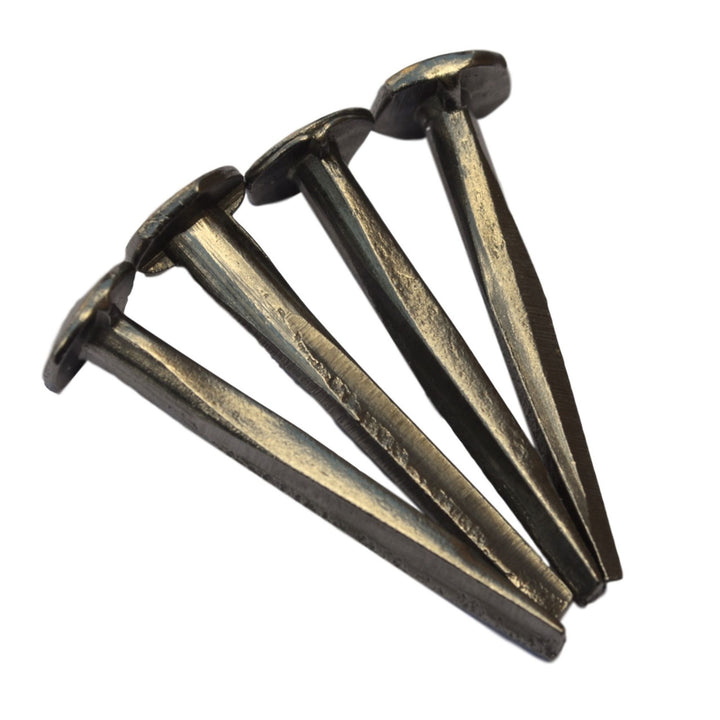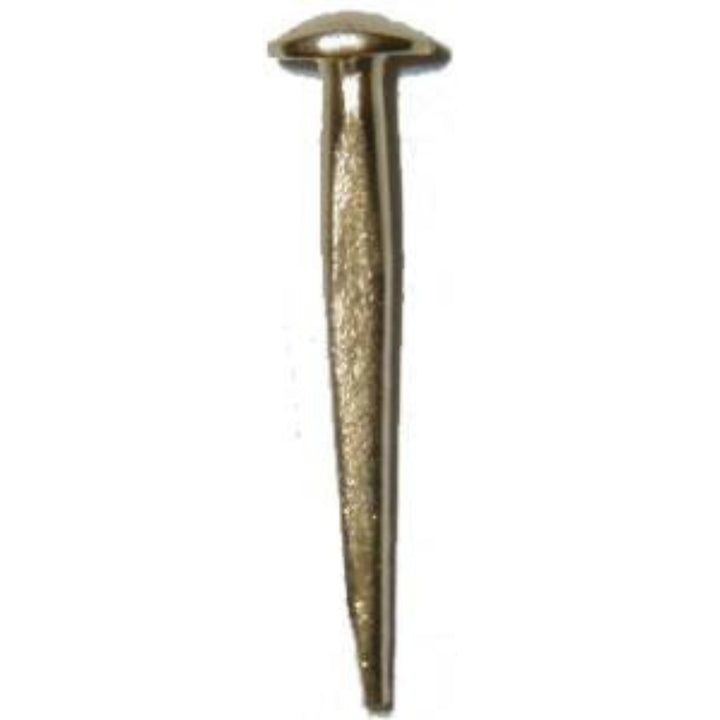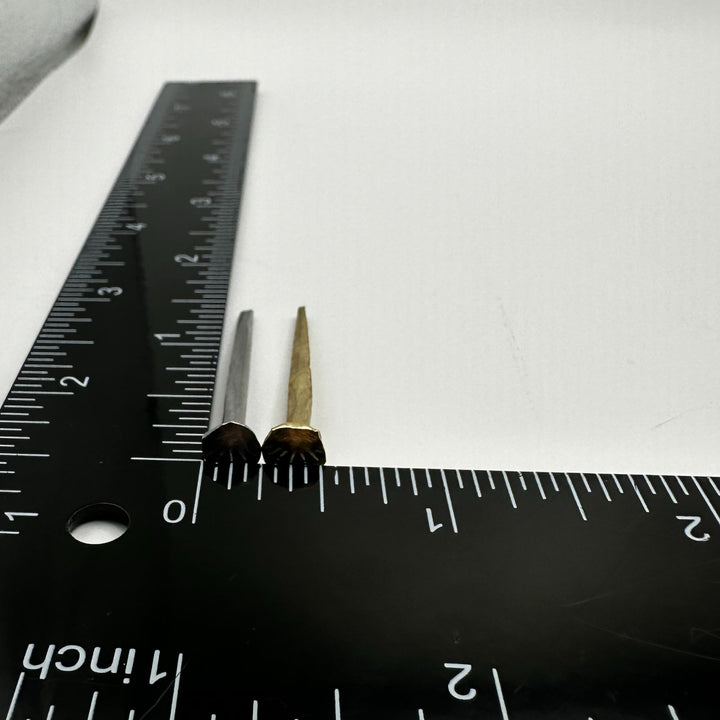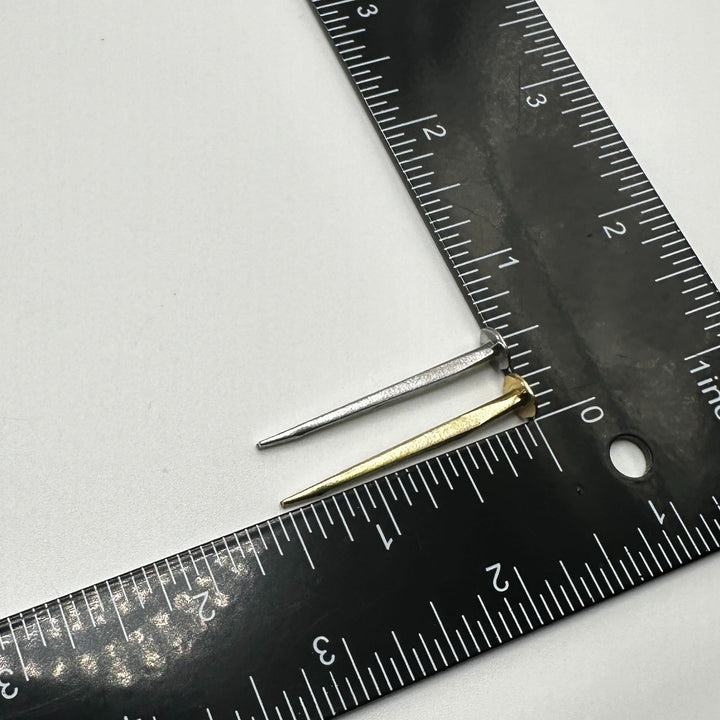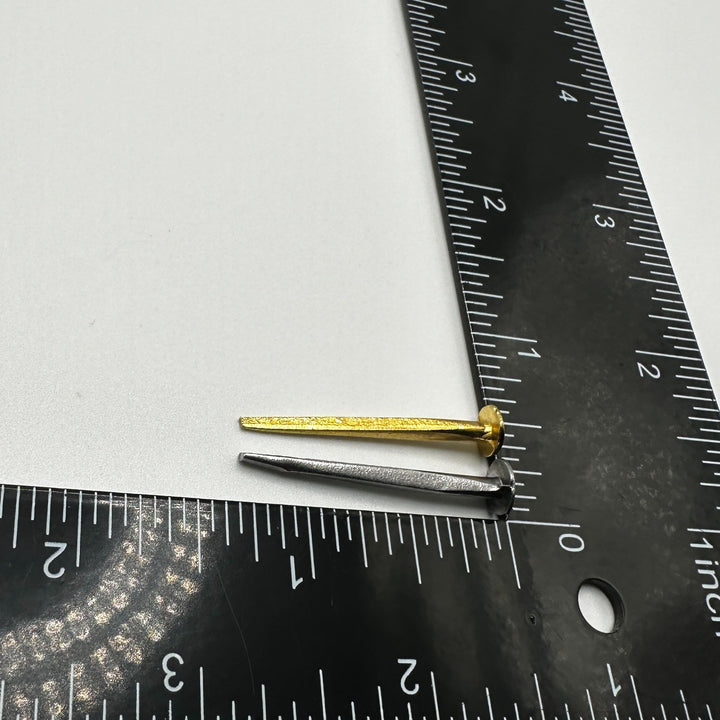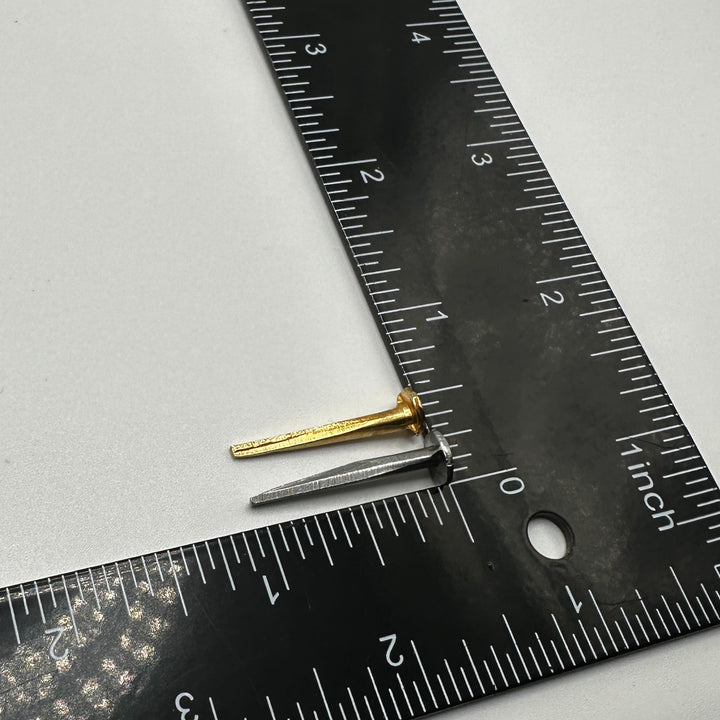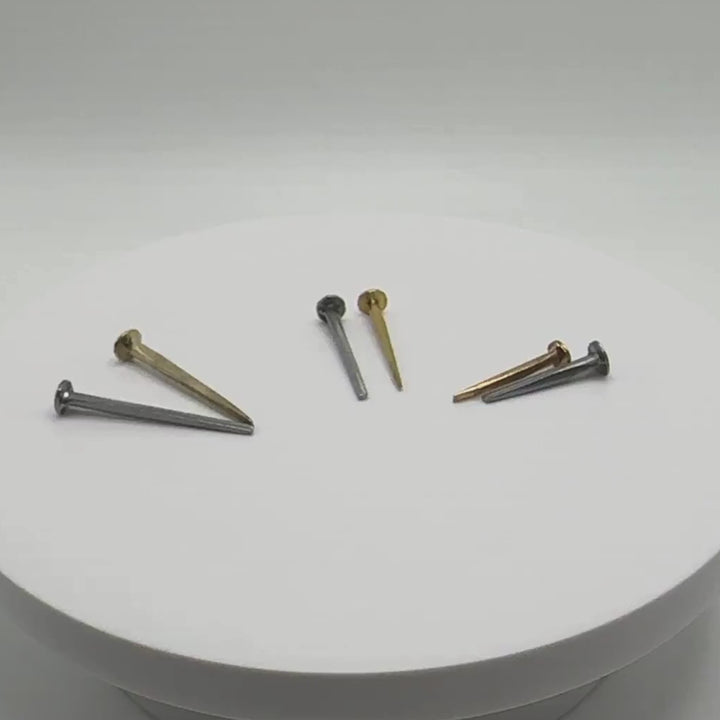Trunk Nails, Brass or Steel - Secure and Decorate with Authenticity.
Historical Context
Trunk nails, essential in antique restoration, carry a rich history. Originating from the time of the Egyptians and Romans, early nails were handcrafted with painstaking attention. The Middle Ages saw a transition to more complex joint techniques with minimal nail use. The hand-forged nail, a mainstay for centuries, was typically square, tapered, and individually shaped by blacksmiths. The late 1700s ushered in a significant advancement with the introduction of "cut" nails, distinguished by their tapered rectangular shafts and heads, streamlining nail production and becoming prevalent in early 1800s furniture and construction.
Significance in Antique Furniture
Nails offer vital clues to the age and authenticity of antique furniture. Until around 1800, hand-forged nails with their unique characteristics were common, giving way to cut nails in the 19th century, and eventually to round wire nails in the 20th century. This evolution reflects the ongoing quest for the ideal nail, mirroring broader technological and material advancements.
Specifications
- Material: Brass or Steel
- Dimensions: Available in lengths of 1", 1-1/4", and 1-1/2"
- Quantity: Sold in dozens
- Finish: The brass and steel finishes offer distinct aesthetic and practical benefits, suited to various restoration styles and preferences.
Usage and Aesthetics
Trunk nails, available in brass or steel, are specifically designed for securing structural trunk hardware. Their robust construction ensures a strong hold on even thin trunk walls, ideal for attaching structural components like hinges, handles, and¬†handle caps‚. They not only serve a functional purpose but also enhance the aesthetic appeal, aligning with both the historical integrity and contemporary needs of trunk restoration projects.
Use trunk tacks to fasten decorative items like rosettes & embossed metal.



